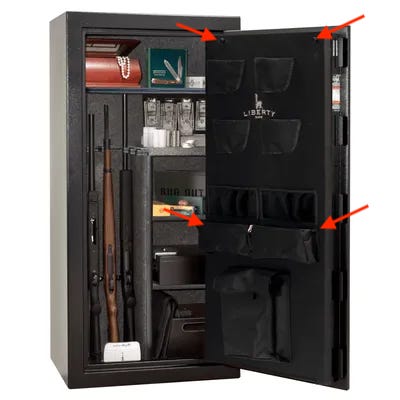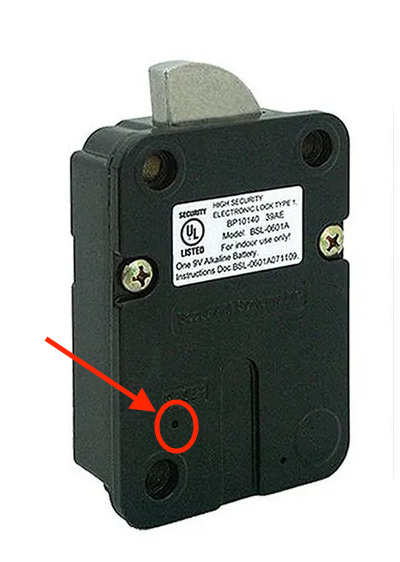Instructions for Liberty-proofing your Liberty safe
How to stop a security company from compromising your security
For anyone yet unaware, Liberty Safe on August 30, 2023 had what many believed was their Bud Light moment (I wrote the below instructions back then but never thought to share them on substack). The FBI was executing an arrest warrant against a subject apparently regarding the January 6, 2021 incident at the U.S. Capitol. While in the suspect’s home, the FBI contacted Liberty Safe to obtain access to the suspect’s safe. Liberty decided to comply and provided the FBI a code to access the safe (unlike Apple who refused to unlock a criminal’s phone for the Feds). I do not know the specifics of the warrant, whether it was strictly an arrest warrant, or if it included any search and seizure provisions, nor can I say that matters. Regardless, Liberty Safe violated the trust of their customer(s). It certainly altered my previously positive perception of this particular purveyor of protective products.
I know many, like myself, may not be able to afford or may simply not wish to replace a safe in which they have already invested a substantial amount of money, not to mention time in organizing the interior (anyone who doesn’t own one may not understand: the struggle is real!). Therefore, since Liberty Safe company saw fit to release to law enforcement the “manager reset code” (or “master code”) for a user’s safe recently, I decided it was time to Liberty-proof my Liberty safe and write up the instructions so others could do the same.
Just for a little background, Liberty does not manufacture the keypad or the lock - they are manufactured by Securam (on the newer safes - older Liberty safes used S&G locks which must be modified by using the instructions at the end of this document). When Liberty purchases the locks from Securam, they are set to factory default with a “master code” (or manager code/manager reset code) of 111111 and a user code of 123456. Liberty safe changes the master code when it is installed on a safe, and that code is stored with reference to the serial number of the safe. When the safe is purchased, if/when the owner registers the safe for warranty purposes, the owner’s information is stored along with the serial number and master code. The purpose for this is that, if a safe owner forgets the user code, Liberty can be called and Liberty can provide the master code so the user code can be changed. The problem lies in the fact that Liberty retains this master code and can share it with others (like law enforcement). In order to rectify this situation, I decided to see what it would take to change that master code. Below is the process by which I performed the task successfully. There is another method, if you would prefer, that I will add at the end.
First, I found instructions online for performing a factory reset on the installed Securam lock. The process is a physical one, so it requires physical access to the lock itself. It is much like the reset process on old electronic devices wherein a narrow tool (such as an unfolded paperclip) was inserted into a hole that said “reset” in order to depress a button. I was able to gain access to the lock to perform the reset and change the master code to something Liberty will not have on record. The only tools I needed were a phillips head screwdriver and a paperclip.
Most of these instructions will work for any brand of safe that uses a Securam SafeLogic digital keypad. The only difference will lie in how to access the lock. To access the lock on a Liberty safe, all that should be required is a phillips screwdriver (you may need a flat head to expose the screws). I cannot speak for other brands, though I expect they will be similar.
For Liberty safes specifically, open the door to your safe.
*** Keep the safe door open until you have completed the process and tested the lock so you do not lock yourself out of your safe***
On the inside panel of the door, you will find at least 4 “caps”, one in each of the upper corners and one about middle-height along each side. Remove the caps to expose the screws (if they’re on tight, this may require a flat-head screwdriver or another narrow-edged tool to pry them off). Once the caps are removed, use a phillips head screwdriver to remove the screws, then remove the panel from the door (be careful that the panel doesn’t just fall on you).
With the panel removed, the lock will be exposed, and the rest of these instructions will apply to any Securam safe. Disconnect the keypad cable from the lock. On the back of the lock, you will see a QC (Quality Control) sticker next to which you should also see engraved the word “RESET.” The reset button lies behind this sticker. You may remove this sticker if you like, or you can simply poke a straightened paperclip through the sticker into the reset hole.
Once you are able to access the hole for the reset button, use the paperclip to press the button 3 or 4 times (it doesn’t have to be exact, but press and release it at least three times). This will drain any remaining power stored in the capacitors. Next, press and hold the reset button with the paperclip. While still holding the button, count to five then reconnect the cable from the keypad to the lock. Continue to hold the button until you hear the keypad beeping. When you hear the beeping, the reset is complete and you can release the reset button. Your codes should now be 111111 for the master and 123456 for the user. You may, if you wish, replace the inside panel, though I waited until I successfully changed the codes just to be sure I didn’t have to repeat the reset process.
Use the following steps to change the codes:
Enter 000000
Enter the code you wish to change (master or user)
Enter the new code you would like to use
Repeat the new code to set it in the lock
Test the new code
Repeat for both the user and master code
That’s it. Pretty simple really. If you haven’t yet replaced the inside panel, it is safe to do so now.
For those who do not wish to remove and replace the inside panel, or who have a lock that does not have a reset option (like the S&G in the old Liberty safes), or if you have a brand of safe for which removing the panel does not expose the lock, there is another method as I mentioned earlier. Call your safe manufacturer and tell them you forgot your user code. If you have registered your safe so they can verify your information is connected with the serial number you provide, they should be able to give you the master code to reset the user code. Once you have the master code, you can also reset the master code. If your lock is not a Securam, you should be able to find instructions for changing the master code once you actually have the code.
As a last help for those with Securam locks, if you have the master code but forget your user code, the following is the process to reset your user code using the master code:
Enter the master code and hold the last button until the lock emits a double beep (if your lock has lights, the lights should flash in unison with the beeps)
Press the number 3 (this will delete the old user code)
Repeat step 1
Press the number 1 (this will set you in a mode to enter the new user code)
Enter the new code you would like to use
Repeat the new code to set it in the lock
Test the new code
That’s all there is to it. I hope you find this helpful!





One thing I recommend is to use multiple safes.
I'd love to see a good list of recommendations and serious evaluation of just how hard or easy it is to get into a safe. I've heard that with a good electric saw, many safes can be cut into very rapidly.
We purposely did not get any digital safes. Ours are all keyed or tumbler locks. I expect the keyed ones wouldn’t be to hard to get into but that tumbler lock on the big guy is complicated. Not your typical locker lock. When you know it it’s still easy to screw it up. None are Liberty safes. I went down and checked. Will pass this info on if we discover any friends with Liberty safes though.